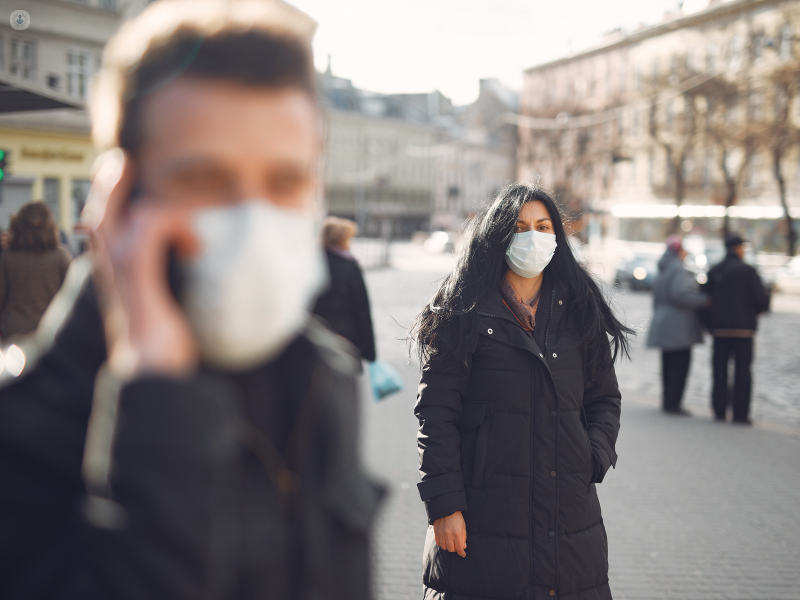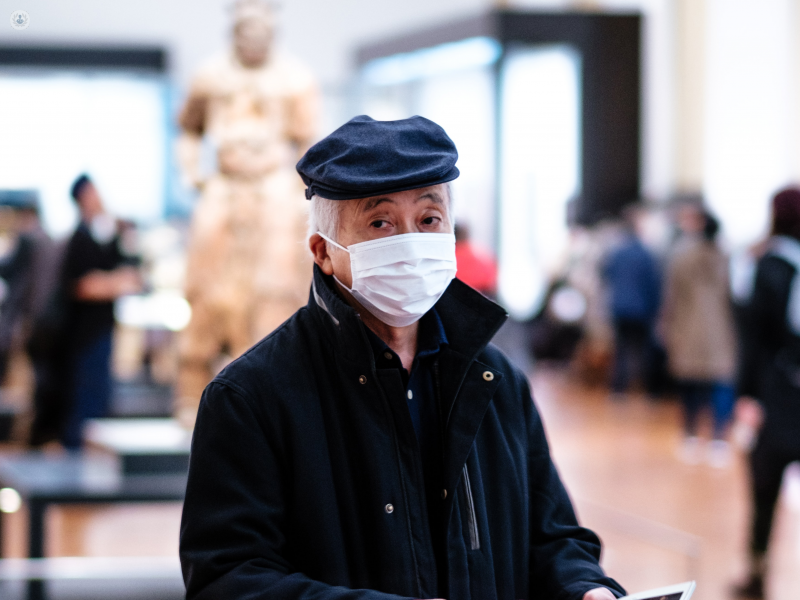What does COVID-19 do to our bodies?
Written by:For most people, the coronavirus results in relatively mild symptoms for around 8 out of 10 people and will resolve after some days of needed rest. For others, however, it requires medical attention and, unfortunately, some people need additional breathing and life support. In rare cases, the body is unable to fight the disease and it leads to death.
So, what is happening to the body to cause people to need hospitalisation and why is it affecting certain people more severely than others?

How does the coronavirus enter the body?
Like many other viruses, the coronavirus enters the body through our airways. You usually breathe it in after standing near somebody (who already has the virus) while they cough. You can also infect yourself by touching a contaminated surface and then touching your eyes, nose and mouth afterward.
Firstly, the virus attaches to the lining of your throat, lungs and airways by ‘hijacking’ the cells and multiplying, quickly establishing itself inside the body. This period is known as the incubation period where symptoms don’t show but marks the beginning of the disease we know today - COVID-19.
Why does it make you sick?
After around five days, you begin to develop a dry cough, fever and body aches, similar to the seasonal flu. The dry cough is typically due to the irritation of cells in the throat from the virus. You begin to feel sick because the body has recognised there is a foreign invader and starts to release chemicals called cytokines, which ramp up the immune system to fight the disease. All of this makes you feel very rundown.
After five days of rest and drinking a lot of fluids, you will likely start to feel better because the immune system has managed to fight off the virus. For others, this may not be the case.
How does the disease progress?
What we know so far is that when the disease progresses, it is likely due to our immune system overreacting to the virus causing inflammation in our lung sacs, rather than the actual virus attacking the body. Some experts call this a ‘cytokine storm’.
Usually, when a virus or bacteria enters the body, our immune system works very hard to fight it. Our bodies are also able to regulate the strength of the immune system, preventing it from going into overdrive. However, this virus somehow causes an imbalance in our immune response, making it rage on even when the virus is no longer a threat. It keeps releasing uncontrolled levels of cytokines, making us feel very ill and exhausted for a long time, eventually reaching our lungs and damaging healthy cells. This leads to inflammation in the lung sacs - also known as pneumonia.
During pneumonia, the lungs sacs fill with water and cause shortness of breath. This is why some people need a ventilator to help them breathe and get oxygen into their bodies.
To understand how the virus affects the lungs in more depth, read our top respiratory physician, Dr Muhammed Raashed’s article on this topic here.
Why do some people end up in a critical condition?
At this stage, the immune system is going into complete overdrive and causing a lot of collateral damage throughout the body. The kind of damage might be:
- Septic shock: the blood pressure dramatically drops and organs stop working
- Acute respiratory distress syndrome: widespread inflammation in the lungs prevents the body from getting enough oxygen
- Heart, kidney and other organ failures: widespread inflammation and lack of oxygen levels prevent the body functioning properly and organs begin to fail.
What treatment is available at this stage?
Treatment at this serious stage may involve extracorporeal membrane oxygenation (ECMO), which is an artificial lung that helps take blood out of the body via tubes, oxygenates it and pumps it back in. This has helped some people with heart and lung problems.
Another treatment involves continuous positive airway pressure (CPAP) which supplies the patient with air and uses pressure to keep the airways open. In most severe cases, the person cannot breathe alone and requires intubation and ventilation from a life support machine. At this point, the survival rate is around 50%.
This effect is much more apparent in people with underlying lung diseases who have limited lung capacity. Since there are no effective antiviral medications, the only form of treatment is supportive, which includes rest, supplemental oxygen, IV fluids and if necessary, ventilation.
Why are the elderly more severely affected?
Health experts are still trying to understand better, but many theories are emerging the more we know about the disease. Some of them suggest that older people typically have less robust immune systems than younger people, either allowing the virus to overpower the body or making them more at risk of their immune systems overreacting and causing severe inflammation and respiratory and organ failure.

Bruce Aylward from the World Health Organisation argues that people tend to be dying from an “inflammatory process in the lungs as we saw with SARS, rather than an infectious process”. Aggressive immune responses tend to be worse in people with underlying health problems, especially those with hypertension (high blood pressure) and cardiovascular disease.
Typically, when our lungs aren’t working properly, our hearts have to work even harder and elderly people are more likely to have heart conditions, such as heart disease. A lot of the elderly people that are admitted to hospital are dying from heart attacks and others develop acute respiratory distress syndrome, an acute lung injury that is also causing many of the fatalities.
As we age, we are also less efficient at coughing and sneezing, making it more difficult for us to clear the virus from our airways. The elderly are more likely to have lung problems or have accumulated lung damage over the years from pollution and smoking, which contributes to respiratory failure or pneumonia.
While most people will survive COVID-19, unfortunately, not everyone can receive the best care right now. Although our health services are trying their best to support every patient, they cannot attend to the high volume of infections we are seeing these days. So, the best way to help is to respect social distancing rules by staying at home to prevent further spread of the virus so more people can receive the treatment they need.
Stay up-to-date on the latest coronavirus news from Top Doctors.


